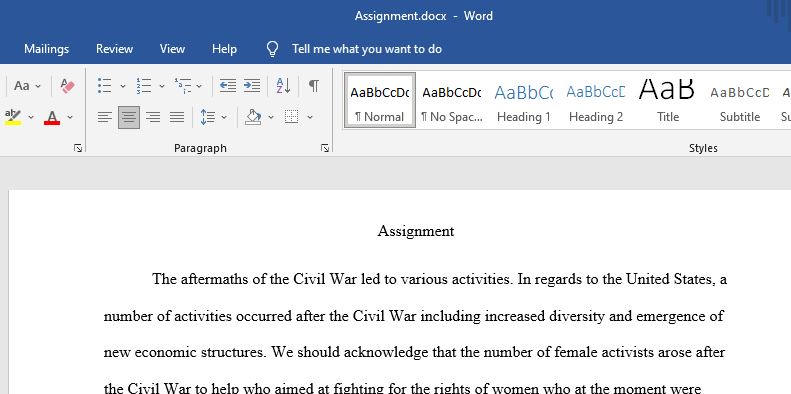Assignment: Dealing with diversity in America from reconstruction through the 1920’s.
Possible position—in each case you can take the pro or con position:
- The Lost Cause narrative of the South effectively sabotaged and influenced racial policy in the US for most of the post-Civil War period. (or you can take the position that it did not)
- Political policies in the decades after the Civil War generally promoted diversity and “the melting pot” despite the strong prejudices of a few. (or you can take the position that political policies did not)
- Reform movements between 1865 and 1930, like the Progressives and the agrarian populists, generally led the way to increased democracy. (or you can take the position that these movements did not)
After giving general consideration to your readings so far and any general research, select one of the positions above as your position—your thesis. (Sometimes after doing more thorough research, you might choose the reverse position. This happens with critical thinking and inquiry. Your final paper might end up taking a different position than you originally envisioned.). Organize your paper as follows, handling these issues:
- The position you choose (from the list above)—or something close to it—will be the thesis statement in your opening paragraph.
- To support your position, use three specific examples from different decades between 1865 and 1930. You may narrowly focus on race or gender or immigrant status, or you may use examples relevant to all categories.
- Explain why the opposing view is weak in comparison to yours.
- Consider your life today: In what way does the history you have shown shape or impact issues in your workplace or desired profession?
Research and References:
You must use a MINIMUM of three sources; the Schultz textbook must be one of them. Your other two sources should be drawn from the list provided below. This is guided research, not open-ended Googling. You will have a list of Sources at the end, using SWS format. You will have short, SWS-style in-text citations to those sources appropriately placed in the body of the paper. Except as your instructor might direct, don’t use other sources for your paper than those listed here. (Of course, for “starter research” you can read many sources.)
Source List for Assignment 1:
Be sure to use the Schultz text as a source. Use at least two of the other sources listed here. Some sources are “primary” sources from the time period being studied. Some sources below can be accessed via direct link or through the primary sources links on Blackboard. Each week has a different list of primary sources. For others, they are accessible through the permalink to the source in our online library: Sources below having libdatab.strayer.edu as part of the URL have a permalink to that source in our university’s online library.
SWS Form for the textbook: Kevin M. Schultz. 2018. HIST: Volume 2: U.S. History since 1865.5thed.
Answer preview:
word: 900

